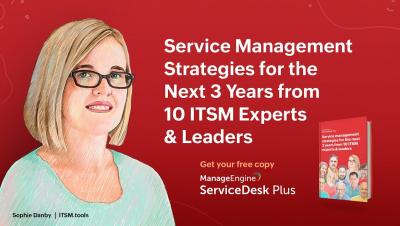Operations | Monitoring | ITSM | DevOps | Cloud
ITSM
The latest News and Information on IT Service Management, Service Desk and related technologies.
The Importance of Automating Workloads in the Cloud
The adoption of cloud computing has seen a constant rise. Research estimates that the cloud has the potential to add USD 1 trillion of Economic Value by 2030. With this increase in cloud adoption, the need to scale faster in a more complex cloud ecosystem seems like the fate of every organization. For IT teams, the challenge is not any different! In a world where our needs can be fulfilled virtually from the comfort of our couches, Gone are the days of long wait times and doing something manually.
Harnessing the Power of Nexthink and Qualtrics
Today, enterprise IT teams are being asked to manage thousands of devices, hundreds of applications, dozens of networks, multiple clouds, and so much more. It’s critical for IT to have clear visibility over end user digital experience. Questions such as: are my fellow employees actively using the applications they have been provisioned, and if so, are they satisfied with the experience, are vital pieces of information for driving overall business efficiency.
ServiceNow Integration - xMatters Integrations
Asset Management: Retail Solution
Asset Management: Food and Beverage Industry
Edge Intelligence: Realtime Operational Awareness across Inventory, Health & Security Configs
Streamline user lifecycle management with ADManager Plus' orchestration
Orchestration in an IT environment refers to the coordinated management of workflows, applications, and systems, with the primary goal to optimize business performance by streamlining processes. Using orchestration, IT administrators can automate, from a single console, a series of tasks to run at a defined time or interval. This includes automating IT tasks like provisioning of user accounts, as well as managing databases, incidents, applications, and cloud resources.
6 steps to better infrastructure visibility
Picture this: A critical business service is offline. Instead of panicking, you’re calm yet concerned. You retrieve data about the service in question and instantly see exactly which infrastructure components the service depends on, as well as their statuses. You quickly engage IT operators to address the issue and notify the line-of-business lead with an estimated time for its resolution. This scenario doesn’t have to be an impossible dream.











